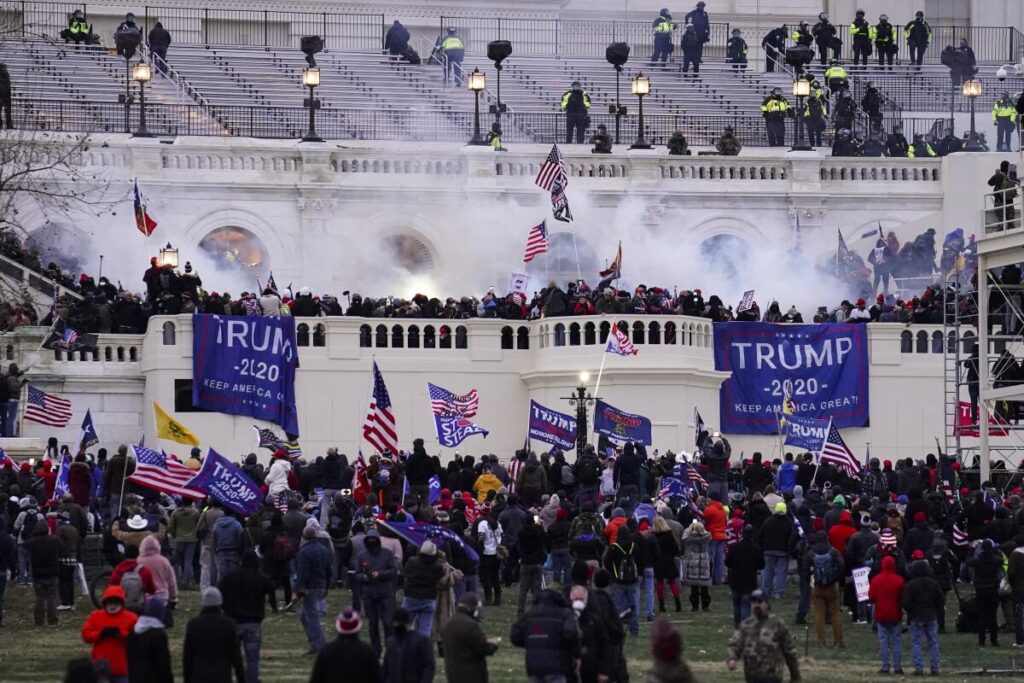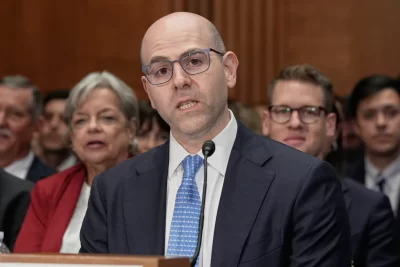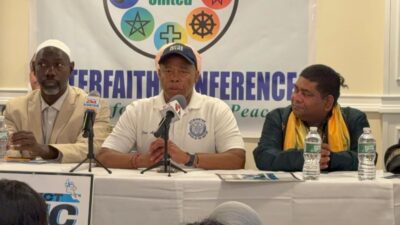
Can former President Donald Trump run for his old job again after his role in the Jan. 6, 2021, attack on the U.S. Capitol? The answer may depend on the definition of insurrection.
Liberal groups have filed lawsuits in Colorado, Minnesota and other states to bar Trump from the ballot, citing a rarely used constitutional prohibition against holding office for those who swore an oath to uphold the Constitution but then “engaged in insurrection” against it. The two-sentence clause in the 14th Amendment has been used only a handful of times since the years after the Civil War.
Because of that, there’s almost no case law defining its terms, including what would constitute an “insurrection.” While people have argued about whether to call Jan. 6 an insurrection ever since the days following the attack, the debate in court this week has been different — whether those who ratified the amendment in 1868 would call it one.’
“There’s this very public fight, in all these colloquial terms, about whether it’s an insurrection, but it really comes down to brass tacks defining what this constitutional term means,” said Derek Muller, a Notre Dame law professor who’s followed the litigation closely.
There are a myriad of other legal reasons why the long-shot legal bids to bar the former president and current Republican primary frontrunner from the ballot could fail, from limits on the role of state courts to whether Section Three applies to the president. But perhaps none resonate like the debate over whether the Jan. 6 attack should be considered an insurrection in the first place.
“What does it mean in your estimation to have engaged in insurrection or rebellion against the Constitution?” Justice Gordon Moore asked the lawyers for each side.
Nicholas Nelson, representing Trump, defined an insurrection as “some sort of organized form of warfare or violence … that is oriented toward breaking away from or overthrowing the United States government.” He added that nothing in the past 50 years met that criteria.
Ronald Fein, an attorney for the group Free Speech For People, which is representing the petitioners, said an insurrection against the Constitution is “a concerted, forcible effort to prevent or obstruct execution of a central Constitutional function,” which he said closely describes Trump’s actions surrounding the January 2021 assault on the Capitol, an attack that was intended to halt certification of Democrat Joe Biden’s election win.
“Insurrection might be in the eye of the beholder,” Minnesota Supreme Court Chief Justice Natalie Hudson concluded after statements from both sides.
A day earlier, an Indiana University law professor, Gerard Magliocca, sat in a Denver courtroom and described his research into Section Three, a subject few had delved into before he started looking into it in late 2020.
Magliocca dug into dictionary definitions of insurrection from 150 years ago — one was “the rising of people in arms against their government, or against a portion of it, or against a portion or one of its laws.”
He found an opinion from the U.S. attorney general in 1867 that former confederates should be barred from certain offices even if they simply bought bonds in the rebel government. He also found instances where Congress refused to seat elected representatives whose only violation was writing a letter to the editor backing the confederate cause or paying a son $100 to help cover his costs to join the confederate army.
Congress also passed a law in 1862 making insurrection a crime that used different language. Some critics of the Section Three lawsuits have noted that out of the thousands of charges filed by the federal government related to Jan. 6, no one has been charged with the crime of insurrection — though several far-right extremists have been convicted of seditious conspiracy.
Magliocca noted that constitutional language is different than far more technical and detailed criminal statutes, and Section Three says nothing about the person barred from office having to be first convicted of a crime. Indeed, Magliocca testified it was understood the goal of the provision was to keep a wide range of former confederates out of public office in the years after the war.
In 1872, Congress lifted the ban for most former confederates, something it’s explicitly able to do under the terms of Section Three.
On Friday in the Colorado hearing, Trump’s lawyers put on their own constitutional expert, Robert Delahunty, to note that some of Magliocca’s definitions were contradictory. Some required the use of “arms” in insurrection while others did not.
Delahunty, a retired law professor who is a fellow at the conservative Claremont Institute, said the more important question is the unique requirement in Section Three that it be an insurrection against the Constitution.
“What really needs to be explicated is not the plain vanilla meaning of insurrection but the whole phrase — insurrection against the United States Constitution,” Delahunty testified on Friday.
The lawyers seeking to disqualify Trump in Colorado noted that even the former president’s own attorney in his impeachment trial for the Jan. 6 attack described it as an insurrection.
“The question before us is not whether there was a violent insurrection of the Capitol — on that point everyone agrees,” Trump attorney Michael van der Veen said during the impeachment proceedings in the Senate.
Legal scholars were able to find just one example of the amendment being used in the last century, when it was cited to deny a seat in the House of Representatives to an anti-war socialist elected after World War I.
Following the Jan. 6 attack, however, it’s become more common. Free Speech For People unsuccessfully tried to use it to block Republican Rep. Marjorie Taylor-Green from the ballot last year and also targeted former Republican Rep. Madison Cawthorn, though the issue became moot when he lost his GOP primary.
Another liberal group, Citizens for Reforming Ethics in Washington, successfully used Section Three to block from office a rural New Mexico county commissioner after he was convicted in federal court of a misdemeanor for entering the Capitol grounds during the attack. CREW is the group that organized the Colorado case, where testimony is scheduled to wrap up Friday.
During a hearing in that case Thursday, Trump’s lawyers tried to show that many who attended the Jan. 6 protests were law-abiding, peaceful people. Tom Bjorklund, treasurer of the Colorado Republican Party, wandered the National Mall that day and approached the Capitol, but said he turned back after seeing tear gas and vandalism.
Bjorklund contended that “antifa” was likely to blame for the violence — a false narrative that has been debunked by research showing the crowd was comprised overwhelmingly of Trump supporters. He said he spotted people who seemed like agent provocateurs in the crowd and said he wanted to testify to make a statement.
“I don’t think there was any kind of insurrection — I think it’s a ridiculous narrative,” Bjorklund said. “I just felt like it’s kind of an insult to insurrectionists around the world. Republicans just mad about an election hardly rises to the level of an insurrection.”
___
Fernando reported from St. Paul, Minnesota.



